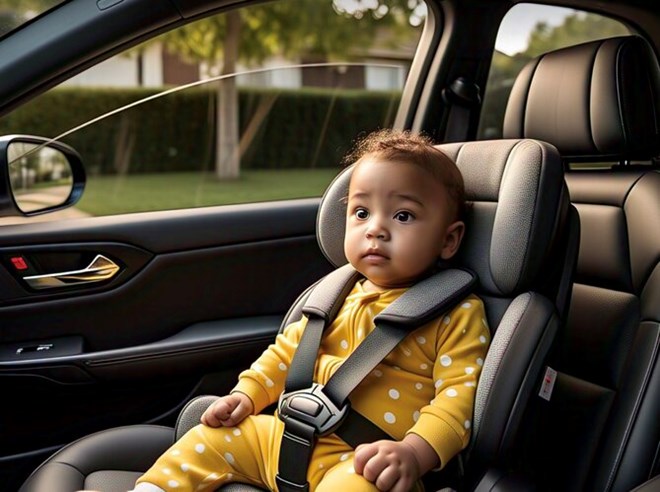On a weekend afternoon, Ms. Nguyen Thi Mo (38 years old, Hanoi) struggled in a car accessories store, standing in front of a row of children's chairs with dozens of different styles and prices.
"I have decided to buy a temporary seats for my two-year-old child, who would have to ask about his weight, height, ISOFIX, 5-point rope... whole-eyed flowers", she laughed but still appeared confused.
In less than two months, from January 1, 2026, cars transporting children will be required to have safety equipment suitable for the age and height of the child, according to the Law on Traffic Safety and Order.
That is, children under 10 years old or under 1.35m tall are not allowed to sit in the front row and must have separate chairs or safety pads in the back row. If they violate, the driver can be fined from 800,000 to 1 million VND.
But more important than the fine, it is the safety of the children.
Mr. Pham Anh Tuan, an owner of an old car showroom on Tran Duy Hung Street, shared: "Many parents still have the habit of letting their children sit in their arms, or sleep in the back seats. In fact, when the vehicle brakes suddenly or collides, the child's body can be thrown forward with force many times the body weight".
"The safety wire on the vehicle is designed for adults, 1m4 or higher high, so if used for children, it will cut the neck or abdomen, which is very dangerous," Mr. Tuan analyzed.

According to estimates by the US National Highway Traffic Safety Administration (NHTSA), using child's chairs properly can reduce the risk of death in infants by 71%, and 54% in children aged 1-4 in cars.
Depending on the age, height and weight of the child, parents can choose 1 of the 3 popular groups of chairs.
Specifically, rear-facing is for babies aged 12-24 months. This is the safest position, because when a collision occurs, the force will be scattered along the back of the chair, avoiding concentration on the neck and head, which are the two most vulnerable areas.
Forward-facing seats are for children aged 2-6 years old, with a 5-point belt fixed to the shoulders, chest and hips, and a fixed anchor on the body.
Children should use this product until they reach the weight/altitude limit prescribed by the manufacturer (usually 18-29kg).
Booster seats are for children aged 6-10, helping to raise the height so that the vehicle's seat belt is in the right shoulder and thigh position, instead of neck or abdomen. When children are over 1m4-1m45 tall, their knees can bend naturally over the edge of the chair, only then should they stop using boosters.
Before buying a chair, parents should check whether the vehicle has a ISOFIX (European standard) or LATCH (US standard) check. These are fixed joints that attach the frame, helping the seats to be firmly attached and not shift when braking suddenly.
Some popular cars in Vietnam only have 1 or 2 ISOFIX checkpoints, making it impossible for many families with two young children to install enough seats. In that case, a safety rope can be used to secure it, but it must be tightened and checked regularly.
"The first time I installed the chair, it took me nearly 40 minutes, and I installed it incorrectly several times in a row. But now that I get in the car and sit in my own chair and put on a belt, I feel much more secure," said Mr. Hoang, Ms. Mo's husband.
According to Mr. Hoang, just watch the manufacturer's instructions video and read the weight and height limits carefully to be able to install it correctly.
The most important thing is to be patient and serious, for the safety of your own children, he said.











